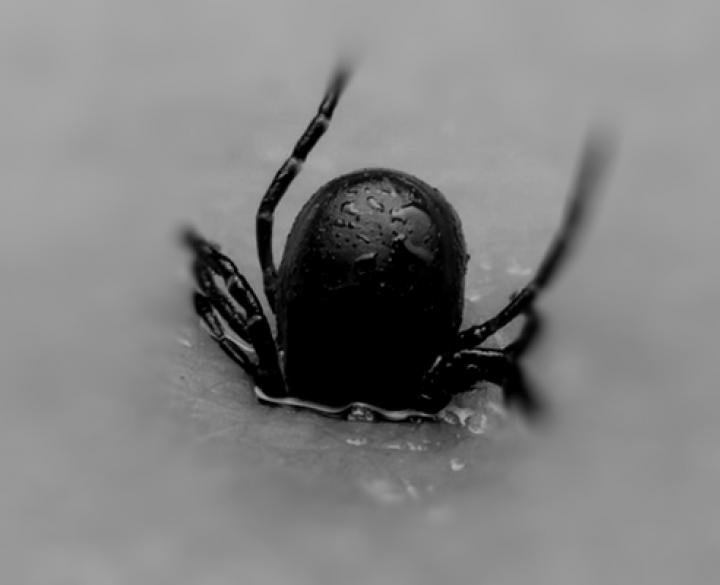NEN 8333 “Protective clothing ‐ Body covering clothing that supports the protection against tick bites and is industrially treated with permethrine”. The tests described in the standard may only be performed by validated testing labs.
Centexbel is acknowledged by the Deutsche Bundeswehr - Wehrwissenschaftliches Institut für Werk- und Betriebsstoffe (WIWeb) according to TL-8305-0031. As a result, manufacturers of protective clothing against tick bites can have their products tested according to the standard at Centexbel.
NEN 8333
NEN 8333 describes the requirements of clothing that protects people against tick bites. The standard is applicable to all types of body covering clothing helping to protect the wearer against tick bites by clothing that has been industrially treated with permethrine. By preventing ticks from biting, Lyme desease and other communicable deseases are being prevented. The standard is applicable to clothing offering protection agains all life stages of the most frequently present tick in Europe, the "Ixodes ricinus".
In the Netherlands, Lyme is considered a professional illness. Employers have to take measurements to protect their employees to the best of their ability. Employees have to reasonably respect the offered measurements. The putting at the disposal of clothing industrially treated with permethrine can be part of the measurements to protect employees against tick bites.
Permethine
Permethrine is a ‘contact-insecticide’ and is only active when in phyisical contact with the target organism. The activitiy of the treated clothing relies on the coming into contact of the tick with the clothing (and thus with the chemical substance) by which it will be killed. Other agents, such as DEET, are so-called ‘repellents’ that discourage the target organism from coming into contact with the treated substrate.
Protective clothing against ticks
This type of protective clothing shall help protecting people who are prone to come into contact with ticks because of their profession. The level of protection against ticks is primarily determined by the measure in which the clothing covers the skin: the more parts are covered, the more effective the protection will be. It's essential that more in particular those body parts are covered that (may) come into contact with vegetation in which ticks can be present (up to a height of 1,5 meter (lower body and arms). In addition, permethrine offers an extra protection.
Ticks coming into contact with permethrine become immobilized so they can no longer penetrate the skin and transmit infectuous organisms. In most cases, protection agains tick bites is one of the functions of body covering clothing. Other functionalities may be the preservation of body heat, prevention of exposure to UV radiation, camouflage, preventing skin irritation or lesion caused by plants of work, corporate identity.
Body covering clothing may also be protect other target groups including volunteers and recreants agains tick bites. The user manuals and warnings therefore also apply to them and have to be foreseen at all times by the manufacturers of these garments to all user groups.
Body covering clothing treated with permethrine may also help protecting against other disease transmitting arthropods, including various mosquito species (Faulde 2016). However, the standard is not applicable to these insects. The renewed application of permethrine by the consumer or other party is also excluded from the scope of this standard.
Design
Points of departure when developing body covering clothing according to EN 8333:
- it concerns body covering clothing (with long trouser legs and sleeves) by which the protection against tick bites is supported by the industrial treatment with the biocide permethrine;
- the WHO limits the daily intake of permethrine. This limit may not be exceeded by wearing protective clothing;
- the health of the wearer may not be encumbered by the permethrine treatment of the clothing; at the same time, the additional protective action of the clothing has to be perserved as long as possible.





